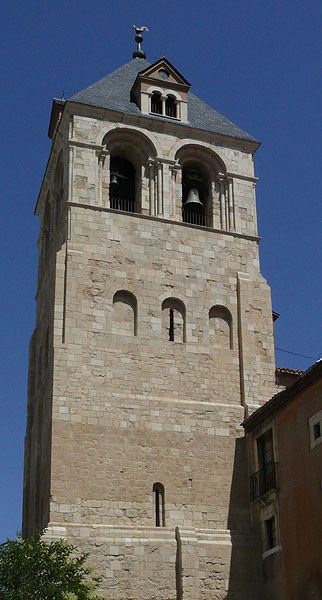 El Gallo metal crowns the tower of the Romanesque church of San Isidoro de León is a city icon. As is the O Teruel, Valencia or bat, Indalo Almería, or perhaps Córdoba, Colt Square, Leon graphically identifies this interesting weathervane who chaired the life of Leon for almost a millennium, today also converted handicraft product city.
El Gallo metal crowns the tower of the Romanesque church of San Isidoro de León is a city icon. As is the O Teruel, Valencia or bat, Indalo Almería, or perhaps Córdoba, Colt Square, Leon graphically identifies this interesting weathervane who chaired the life of Leon for almost a millennium, today also converted handicraft product city.
But you look at the things that are, that both be there, nobody had cared to look carefully that inaccessible copper sculpture. Until the year 2003, within a comprehensive reform of the church, is disassembled for restoration (little) and cleaning. The paper gives the news the cock is definitely the oldest part of the church, which may be of Persian origin. Carbon tests 14 certify that the piece is dated about the year that Muhammad was born.
From this point begins the speculation about its origin and journey, many who deserved congress: "Symposium on the cock Isidorian Tower", Soil for this figure. What seems to be more or less clear, is that the piece can come from Medina Azahara which arrived a Gift, an age to decorate buildings.
There is no doubt that the rooster is a piece of Islamic metalwork, palatine with a clear destination. But, What may be the true origin, origin? There is no definitive answer on, but during the eleventh century there is a curious and interesting line connecting the city of León, capital of the Kingdom, in al-Andalus. In this connection or  link, a series of armed concrete events are, transfer could have taken place in the city of this evocative work. The Cock of San Isidoro could have been brought by Alfonso VI as part of the looting carried out in 1072-1075 to around Córdoba, in support of their ally, King of Toledo, Al-Mamún.
link, a series of armed concrete events are, transfer could have taken place in the city of this evocative work. The Cock of San Isidoro could have been brought by Alfonso VI as part of the looting carried out in 1072-1075 to around Córdoba, in support of their ally, King of Toledo, Al-Mamún.
In early November of the year 1009, Sulayman troops and Leon cross the Guadalquivir, attack the outskirts of Córdoba and terrorize its inhabitants. All Cordoba countryside suffers assaults Berber and Leon, engaged in looting an important part of the wealth of the Caliphate, coming to come, Zaira Medina destroy and loot, Alamiria and Medina Azahara Palace Caliphate, events in which it is said that the Leonese: "Plunder and steal without order".
I put here the link to the page of a web of Lion has deepened their blog this interesting piece which also smells like Córdoba. The piece is now housed in the Museum of the Collegiate León (foto arriba) and instead has placed a replica (foto abajo).



Hey, How do you do the test carbon 14 a piece of metal?
Well I do not know, but I think this is the test I did to traces of soil and pollen that had stuck inside. They are apparently the remains which have served to date with the C14 part.
Ah, in accordance, thanks for the clarification.
La radiocarbon dating, also called carbon test 14, is a method that absolute dating, the truth, little used in Archaeology, but rather in Prehistory (look, but they are not the same). Is to see what quantities of c14's in a material other, and from there, see what absolute age has. It is an old method and little cash for anything that is not more than 5000 years old. And, is little exact, because there usually a margin of around 500 years up or down. We will, if this has been well dated by, I'm afraid they're going to have to find other means of dating it. Also, if you have dated for the land that was within, for truth, less reliable, because this land has been exposed to go you know what things, and measuring nuclear, simply, no good. Just serve with a sample uncontaminated, namely, excavation removed and immediately put in a sterile environment and sealed.
Even so, Specimen, by Attributes, has all the earmarks of coming from a noble place (the noble craft) Muslim culture, logic and antique. How Madina Al-Zahra? Who knows?
From what I have read in some article (would not know which union give) is possible that the piece is not Islamic but Sassanid, because the rooster was one of the symbols of royalty and Sassanid Shapur conquered jerusalem replaced when the crosses crowned by churches cocks. Besides dating predates the rise of Islam. The Cordoba origin is only a hypothesis, although it is quite likely to come from some looting of Al-Andalus by the Christian kingdoms. Sorry to give information without providing the source but I have not managed to find the article where I read this information